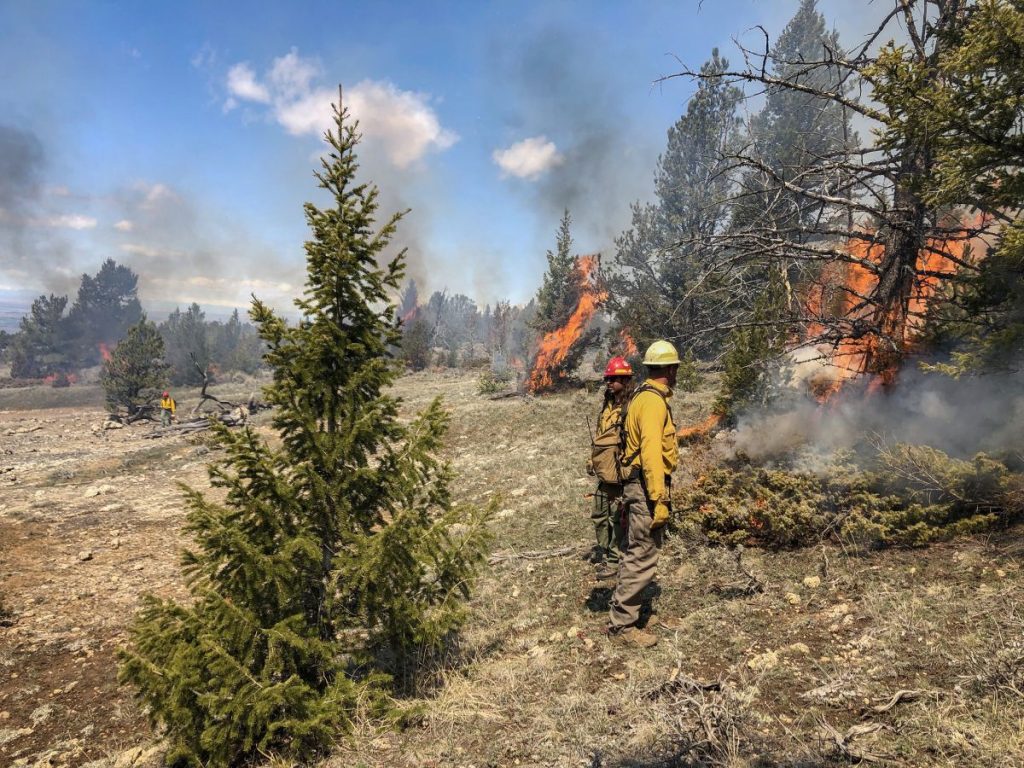The Crucial Cody and Yellowstone Wildfire Prevention Tips Visitors Need
You don’t need to know anything about Yellowstone National Park’s history to understand that wildfires can be incredibly destructive, which is why it’s so important that you learn about a few critical Yellowstone wildfire prevention tips before visiting.
The western United States sees many wildfires each year. They wreak havoc on lives and property. Tragically, many of these wildfires prove fatal, and they can leave iconic landscapes ravaged for generations.
Yellowstone is no exception. There’s usually at least one fire in or near the park each year, but you may have heard that one year was exceptionally bad.
In 1988, fire gutted some of Yellowstone’s most beautiful areas. Over three decades later, the recovery continues, and the scars of 1988’s blazes are still obvious as you pass through the park.
So how can you, as a visitor to the Cody, Wyoming, and Yellowstone region, do your part to prevent wildfires? Let’s look at some of the most important guidance from Smokey the Bear himself in this list of vital Yellowstone wildfire prevention tips.
1. Knowing Conditions and Regulations is Key to Yellowstone Wildfire Prevention
Before you pack a bag for any trip, you always check the weather at your destination, right? Keeping up with the weather is how you can decide what type of clothing to take with you. It’s also key to planning activities — you wouldn’t want to book a horseback ride on a day with a 95% chance of rain and 30-mph wind gusts.
The same is true for Yellowstone wildfire prevention. You’re visiting a fairly arid region, and since most people travel to Yellowstone during the summer months, they should expect to encounter hot, dry conditions.
Of course, heat and a lack of moisture are two of the prime conditions for wildfires. The third? High winds. Combine those three elements, and you’ve got a tinderbox ready to ignite.
What does that mean? On hot, dry, windy days, you should maintain a heightened awareness of open flames, sparks, and anything that could cause dry fuels like grasses, brush, or timber to catch fire.
Typically, on days with elevated fire danger, authorities will issue warnings to the public. Keep an eye on the National Weather Service’s web page for western Wyoming. If you see a “red flag” alert, you know it’s a day to avoid outdoor grilling, fireworks, and any open flames.
2. Be Responsible for Your Campfire
When it comes to Yellowstone wildfire prevention, you should know that nine out of 10 wildfires are caused by humans. A significant proportion of human-caused fires are started by unattended campfires.
If elevated fire danger is preesent during your Yellowstone visit, remember that while campfires can be fun, they aren’t always necessary. If conditions are particularly hot, dry, and windy, it’s safest to simply not start a campfire.
When you do build a campfire, it’s important to pick a safe place as part of Yellowstone wildfire prevention efforts. You want open, flat ground. Look for a big patch of dirt that’s free of flammable materials like pine needles, sage brush, and other fuels.
You should never build a campfire beneath a tree. Keep in mind that many of the pine trees near Cody and Yellowstone were affected by pests like the Emerald Ash Borer over the past two decades, so there’s a lot of dead standing timber in the region. Sparks from your campfire could float up and ignite the dead boughs, especially during particularly dry conditions.
Last, but certainly not least: Douse your campfire until it’s out cold. All too often, hunters, campers, and other visitors leave their campsites thinking that the fire is out, only for it to flare up later in the day and grow into a wildfire.
If you plan on having a campfire, it’s your responsibility to pack the tools and water necessary to extinguish your fire completely. The ashes should be cold to the touch before you leave your campsite — no excuses.
3. Inspect Vehicles and Stay off Dry Grass
You can’t drive off-road in Yellowstone National Park, but there are other places nearby where off-roading is a common activity. But heat and sparks from vehicles can result in wildfires that spread quickly in remote areas, making firefighters’ jobs all the more difficult.
When fire danger peaks, it’s important that you keep your vehicle on the road. Avoid leaving the highway or trail, as exhaust temperatures can exceed 1,000 degrees Farenheit and ignite dry fuels. This is an often-overlooked element of Yellowstone wildfire prevention.
Vehicles can also spark fires when they malfunction. If your car, truck, ATV, or other vehicle hasn’t received regular maintenance, it may not be safe for off-road use. This includes trailers, so make sure your axles and bearings are greased properly.
Even if you remain on the highway, any part of your vehicle that could send sparks flying into dry vegetation on the shoulder poses a potential wildfire risk. Ensure you aren’t dragging any chains — sparks from chains dragging on the pavement have started entirely too many wildfires.
Thanks for reviewing these top Cody and Yellowstone wildfire prevention tips. To learn more about how to minimize your impact as you tour one of the most beautiful places in the world, check out our guide to visiting Yellowstone National Park responsibly.










